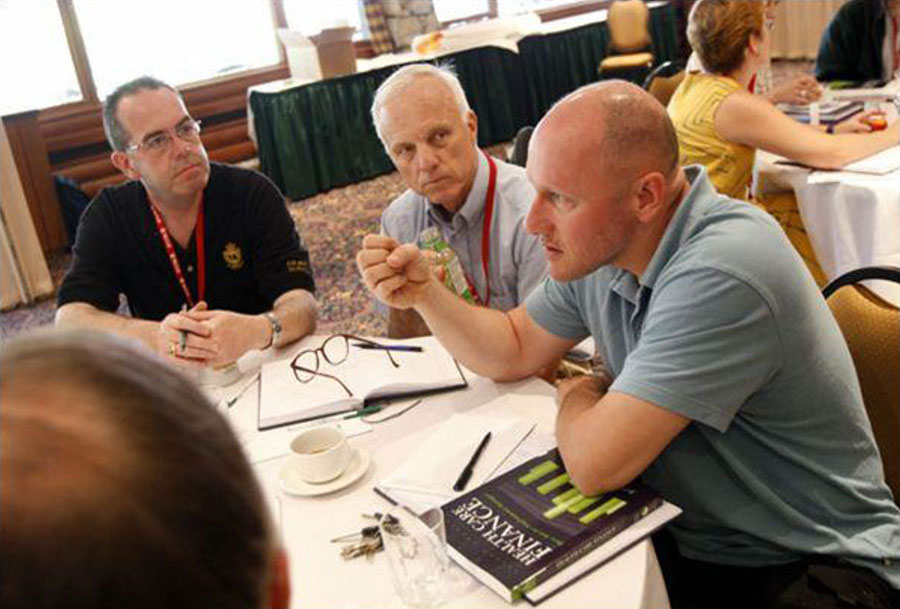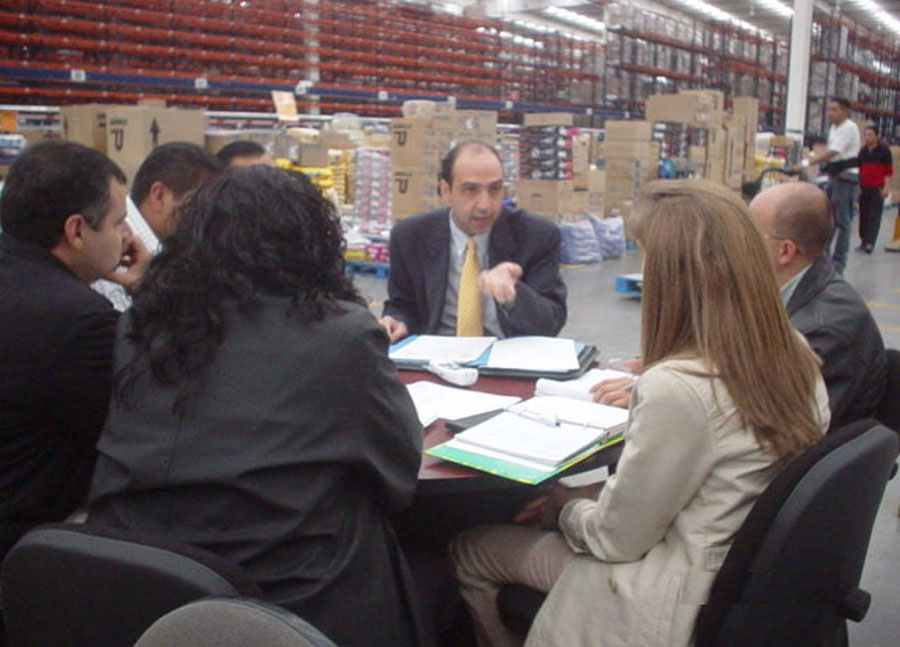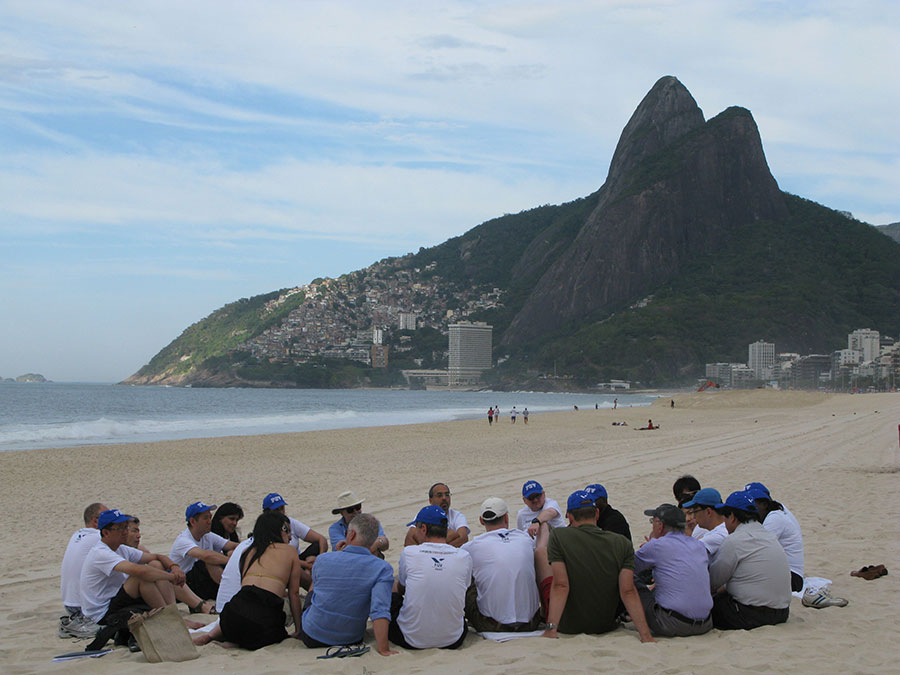Don’t just sit there…
1 July 2015with Jonathan Gosling
Imagine a meeting of the board with the chairman facing backward, not allowed to speak until the end. Imagine a conference with a keynote listener instead of a keynote speaker. Imagine adults sitting in a circle to “show and tell”, just like they did in kindergarten. Does all this sound silly?
We’ve been doing such silly things for years, with great success. They can listen better, speak more thoughtfully, address problems more effectively. Instead of just listening to “speakers”, or not listening while waiting to speak, or enduring a meeting with everyone trying to speak at once, we use a host of different seating arrangements that encourage discussion and development at its best—in and beyond our classrooms.
Twenty years ago we created the International Masters in Practicing Management (impm.org) to get past business education (the MBA), toward true education for managers. We wanted to do things differently—to engage managers beyond administration (a kind of emba if you like). But we hadn’t thought about seating.
“How are you going to seat them?” asked Nancy Badore. She had created a novel program for Ford executives and was helping us think through ours. “I suppose in one of those U-shaped classrooms?” one of us answered. “Not those obstetrics stirrups!” Nancy shot back. We got the point! With that, we were off—never looking back (except when the class asked us to turn around, to receive some honest feedback).
Table Talk
We decided that the managers in our classrooms would sit at small round tables to facilitate them learning from each other. No need to break out.

Round tables turn a collection of individual students into a community of engaged learners. Managers bring wonderful experience to such a classroom: why not let them reflect on it and share their insights with each other? Our 50:50 rule dictates that, after we as faculty introduce new ideas, it’s over to the managers for discussion, on their agendas. We also have a morning ritual: every day begins with everyone scribbling personal reflections in his or her Insight Book, followed by sharing their insights around the table, and then a plenary….
Show and tell in a big circle
For these plenaries, we used to do what most programs do: ask for the best ideas from each table. That dreadful go-around. Then one day a new colleague, mercifully inexperienced in all this, put everyone in a big circle and sat down too. A great “show and tell” discussion followed. The next day, another colleague, unfortunately experienced in all this, put them in the circle again but stood there, as if to say: I will give you permission to speak, you will direct your comments to me, and I will follow with some smart reply. (Professors hate to stop professing!) So we whited him out. (See the photo.)

The day after that, one of us repeated the circle, stood there, and announced: “I’m in charge”—and promptly walked out. Returning after the plenary, the class informed him that next time he was to take his place in the circle like everyone else..
Eavesdropping
How about this? Instead of a big circle, turn one person around at each table, to eavesdrop without speaking, and then have these people report in the plenary on what they heard. People who are focused on listening, rather than on waiting to speak, hear a lot more of the nuance. Here’s an example of what more can be done with this eavesdropping. A colleague doing a session on managing retrenchment polled the class in advance as to who had positive, negative, and no experiences with retrenchment. Then we sat the positives at some tables and the negatives at others, to share their experiences. But what about the few who had no experience? Why not have them eavesdrop at those tables? They all took profuse notes, and then…
The Inner Circle
…we brought these eavesdroppers together in the middle, facing each other in a little circle, to chat about what they had just heard, with everyone else listening. (In effect, they became the eavesdroppers, about what they had just said!) Everyone loved this! One manager in the middle said that her group probably learned more about retrenchment than anyone else. Another, on the outside, said this was the best reporting out of a workshop that she had ever seen. The class dubbed this “The Neutral Zone.”
Tapping in and out
But why stop here? After those in an inner circle have had their say, and others are itching to add something, why not let them tap someone on the inside and replace him or her. The discussion carries on, in fact gets enlivened, still with just a few people (4 or 5 best). Here we have something quite fascinating: a running conversation, with just a few people at a time, yet many people participating, and all listening intently, and no-one in charge. Once, when we had a journalist from the New York Times visiting the IMPM class, we put him in the inner circle. Trouble was, everyone hesitated to tap him out! . (See his article, “The Anti-MBA.”)
Keynote Listener
If we can have eavesdroppers at the tables, why not in the whole class? One time we invited Marshal Ganz, from the Harvard Kennedy School, to run a session in a MOOC we are doing (Social Learning for Social Impact). He came early, to see what we were doing. So we designated him keynote listener in the previous session, to comment on presentations that the participants were making. Everyone, Marshall included, sat in a big circle as he discussed what he had just heard. No canned speech, just honest reactions from a thoughtful observer.
Beyond the classrooms
OK, so all this is well and good for a bunch of managers and professors having a good time while learning a lot in a classroom. But it hardly needs to stop there. We have used keynote listeners to replace keynote speakers in large conferences. We have also used inner circles in rooms of 200 people at round tables, asking at the end of a workshop: “Quick, point to someone at your table who had a really good idea”1 and then asking the first few targets to come forward. One participant described this kind of exercise as a “great way to turn a large meeting into a series of meaningful conversations.”
And into the managerial offices
We have yet to turn the chairman of some major corporation around. (Maybe they are too busy turning their companies around.) But imagine all of this brought into the workplace: round tables, morning reflections, eavesdropping, big circles and inner circles. Or don’t imagine. Ask Carlos. He experienced the seating in one of our programs (embaroundtables.org), and when he got back home immediately installed a round table on the floor of his Mexico City factory. Here is the picture he sent us, with the comment that “We use it very often” when there is the need to reflect on a difficult issue.

Peer Coaching around the tables
Now we have another program, called CoachingOurselves.com, that dispenses with the professors, the classrooms, and the conferences. Managers gather in teams in their own workplace in the same roundtable format Each team downloads slides on a particular topic (for example “Strategic Blindspots”, “Developing our Organization as a Community”, “Beyond Bickering”), relates the material to their common experiences, and carry their insights forward for improvement in their organizations.
Change how and where managers sit and suddenly management development becomes organizational development.
© Jonathan Gosling and Henry Mintzberg 2015. Come sit with us at impm.org (next class 25 October 2015), or mcgill.ca/imhl for health care, or embaroundtables.org for a one-week experience.

Morning reflections in our module in our IMPM module in Rio